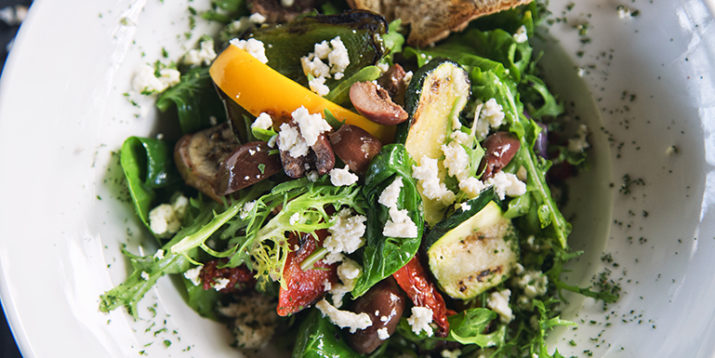5 Underappreciated Dark, Leafy Greens to Try

You’ve probably heard the saying, “everything in moderation.”
Did you know this rule even applies to the healthiest of fruits and vegetables?
Dark, leafy greens have great nutrient-rich profiles that vary with each individual green, but it’s important to eat a balance of healthy foods to ensure you’re getting all your nutrients, instead of overloading on just a few!
If any of you have read my book Superlife, you know I am a big advocate of diversifying your food.
Simple, mono-eating can be great for an individual meal, but you have to make sure you are not always eating the same foods all the time.
Some dark, leafy greens you might be familiar with include spinach, kale, broccoli, cabbage, and bok choy.
Here is a list of a few of my favorite underappreciated dark, leafy greens you might also want to try:
- Microgreens
- Collard greens
- Swiss chard
- Arugula
- Beet greens
When it comes to dark, leafy greens, the darker and greener, the better — and fresh matters too!
Greens from the farmers’ market or from your backyard garden are always best as they were picked only a day or two before you ate them.
As time goes by and produce sits on the shelves, nutrient density and nutritional benefits get depleted over time.
If you get most of your greens from the supermarket, that’s OK, but it’s just something to keep in mind, especially if you need an excuse to start that garden!
5 Dark, Leafy Greens to Try
Microgreens
These are very young greens that have just sprouted. Researchers from the Department of Nutrition and Food Science at the University of Maryland performed an in-depth analysis of the nutritional quality of microgreens.
They concluded that “microgreens contain considerably higher concentrations of vitamins and carotenoids than their mature plant counterparts.”
For instance, according to this study, red cabbage, garnet amaranth, and green daikon radish microgreens contain high levels of essential vitamins such as E, C, and K.
Consider reaching for some organic microgreens to throw in your salads, inside your wraps, or as a decorative nutritional boost on top of your favorite bowl of soup.
Collard Greens
Consider making a wrap using these big greens instead of a tortilla. Collard greens are a nutritious, dark green solution, and their leaves are huge!
Swiss Chard
Swiss chard leaves are large and also make a great tortilla alternative. They also taste great lightly sautéed.
Try one pound in a frying pan with 1 tbsp. of coconut oil (or your oil of choice).
Plus, just one large leaf of raw Swiss chard is a great source of vitamins A, C, and K, as well as a multitude of other micronutrients, vitamins, and minerals.
Arugula
Not only is arugula a great low-calorie option with only 10 calories in 2 full cups, it — like other leafy, green vegetables — can help support cardiovascular health.
It’s also one of my favorite greens to incorporate when I’m looking for a bolder flavor in my salads and it is a great green to sauté or lightly steam with some herbs, spices, and a splash of lemon juice as a side dish.
Beet Greens
Yes, you heard me right! I hate food waste and I cringe every time I see someone rip the tops off their fresh beets and throw them away.
These greens are potentially one of the easiest to overlook so keep them on your radar. In my opinion, they taste similar to kale. They’re great in salads, blended in smoothies, or lightly sautéed.
They’re also full of essential minerals your body needs, including 44.5mg of calcium, 26.6mg of magnesium, 290mg of potassium, as well as trace amounts of zinc, manganese, and iron in just one cup of raw greens.
It is so easy to get in a rut with what you’re familiar with, but nature gave us a wide variety of dark, leafy greens to choose from.
There are so many underappreciated greens patiently waiting for you to incorporate them into delicious, nutrient-dense meals.
So get creative and have fun with your food!
